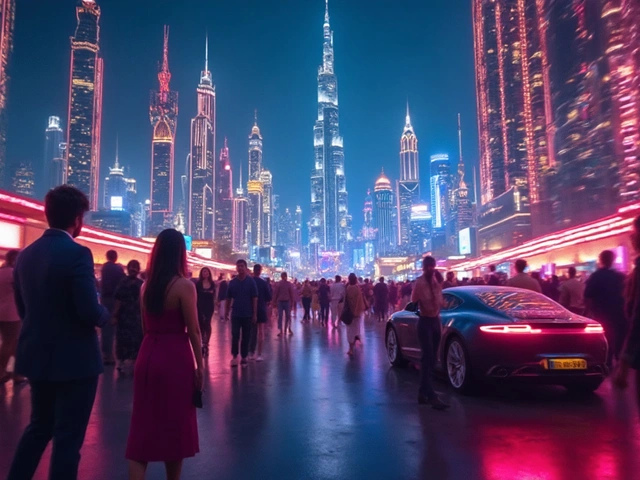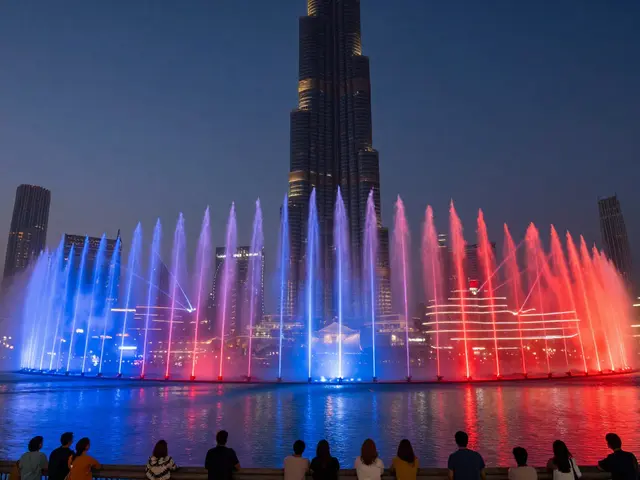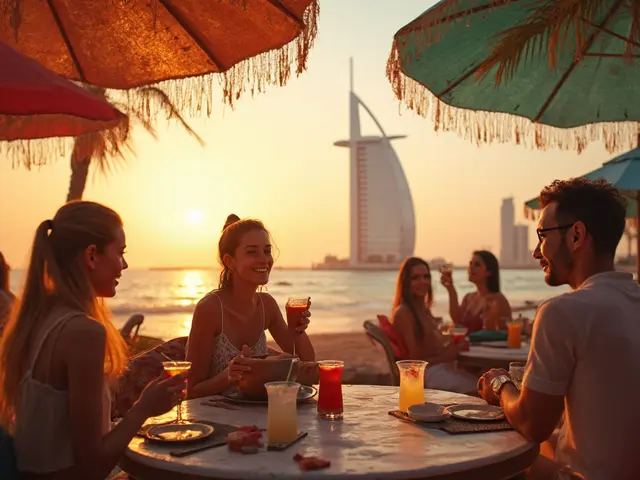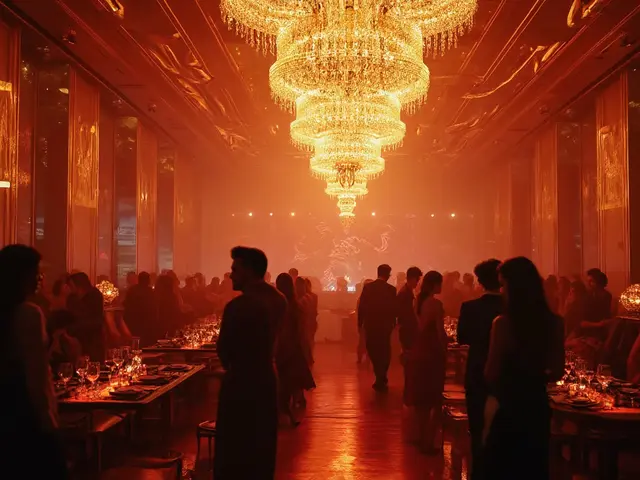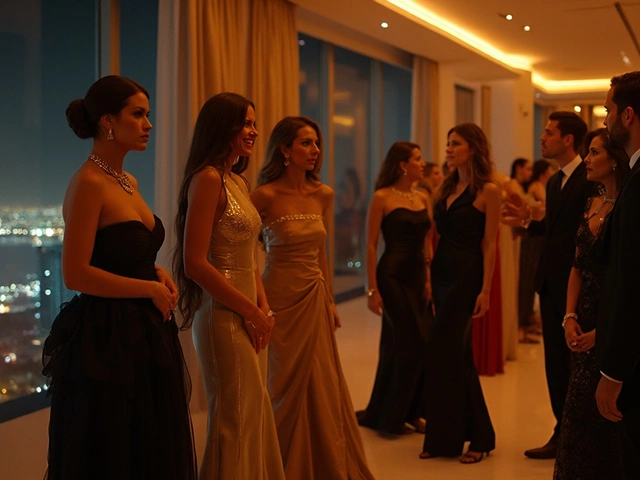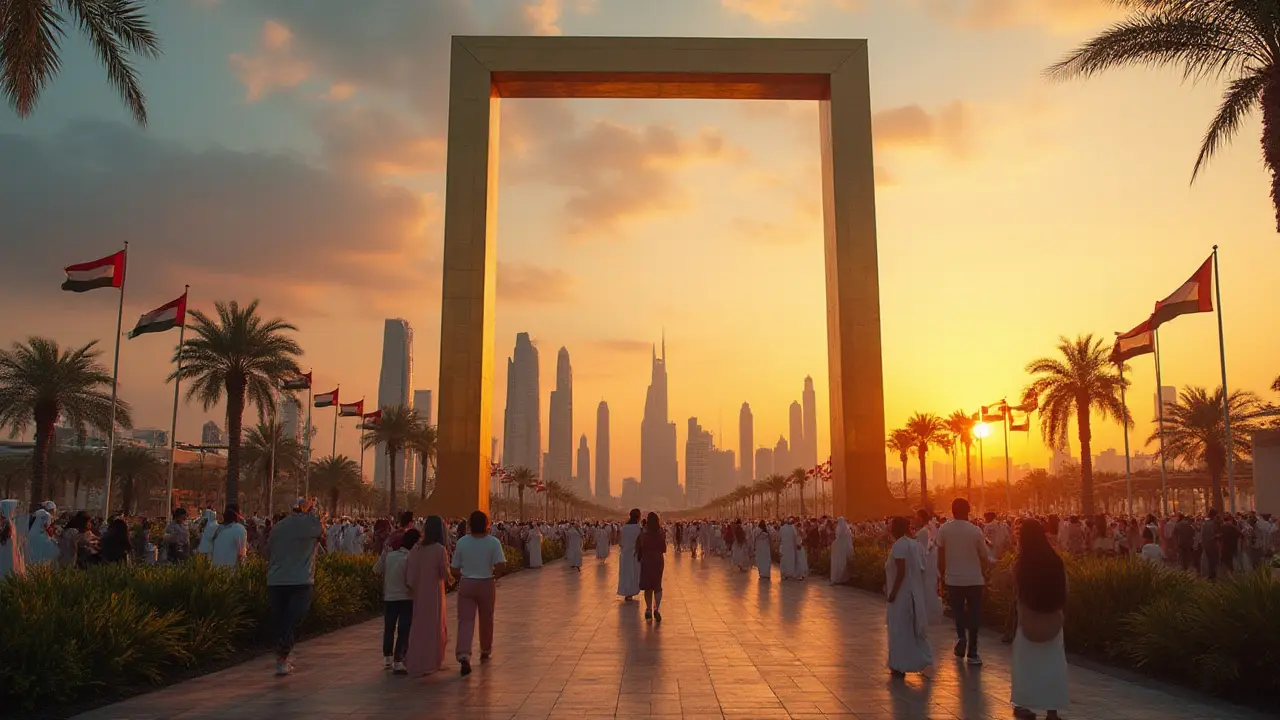
If you ask anyone in Dubai about a building that's both futuristic and rooted in the city's story, Dubai Frame always comes up. Sitting bold between the old Deira and the sparkling new Downtown, it isn’t just a photo op—this landmark ties together the spirit of past, present, and future Dubai in one giant picture frame. Whether you live here or landed at DXB this morning, you just can’t ignore the gold shimmer of this quirky structure popping out of Zabeel Park. It’s like the city put its confidence and innovation into a single frame and displayed it for the world.
The Vision Behind the Dubai Frame
The Dubai Frame didn't spring up out of nowhere. Back in 2013, the idea came from Fernando Donis, who won an international design competition. Donis wanted to capture the city’s incredible transformation—and he finished it with the world’s largest frame. It’s 150 meters tall and 93 meters wide. Think about that: each tower is nearly as high as the Burj Al Arab. The structure literally ‘frames’ views of old and new Dubai from every angle, and that's not by accident. From one side, the towers showcase the bustling skyscrapers, from the other, the historic districts and heritage neighborhoods.
The outside isn’t all that’s special. The motif on the golden façade is inspired by the Dubai Expo 2020 logo, and if you look up close, you’ll see intricate shapes that shimmer in the sun (tough to miss on Dubai’s cloudless days). Even the location is intentional. By sitting on the edge of Zabeel Park, it draws a line—almost literally—through Dubai’s ever-moving timeline. The project is managed by Dubai Municipality, the same people keeping the city’s public spaces spotless and green.
This is no ordinary viewing point. The Frame features a sky bridge made with over 300 tons of steel and glass. When you step onto the glass walkway (about 48 stories above ground), you see cars like toy models whizzing by and can catch the aroma of shawarma drifting over from Karama. The exhibitions inside are just as engaging. On the ground floor, ‘Past Dubai’ gives you an immersive tour through the old souks, pearl diving culture, and even video projections of Sheikh Zayed’s vision for the city.
A stat worth knowing: Dubai Frame cost around AED 230 million to build, showing Dubai isn’t shy about investing where it counts. If you look closely at the elevators, you’ll notice they climb the 48 floors in just 75 seconds. That’s faster than you’ll get your karak at any tea stall.
Inside The Dubai Frame: What to Expect During Your Visit
The journey starts before you even walk in. Zabeel Park is a family favorite, with shaded paths for morning joggers, children’s playgrounds and carve-outs for the food trucks that show up when the weather is kind. Entry to the Frame is separate from the park, but the greenery makes for a peaceful wait if you arrive early. If you drive, the parking situation in Zabeel Park is generous—something you’ll appreciate if you live here and have fought for mall parking on weekends.
Let’s talk tickets. Residents (expats and locals) can use Emirates IDs to secure discounted prices, and kids under three go in free. Most visitors book online now—easier than standing in the midday Dubai heat. Timings shift with the seasons, but doors usually open around 9am and last entry is half an hour before sunset. Dubai’s golden hour gives epic views, especially in winter when the sky lives up to the city’s famous Instagram sunsets.
Once inside, every space is designed for the Gram. The lower floors are loaded with interactive screens that trace Dubai’s growth, old family houses, and even the city’s famous abras crossing the creek. You’ll find QR code stations everywhere. Scan them to get facts or listen to mini-podcasts about what you’re seeing. The staff speak Arabic and English—sometimes even Hindi, Tagalog, or Russian. If you’re a parent, there are plenty of photo ops, but keep younger kids close. The glass floor is exhilarating (some say terrifying), and the wind at the top is surprisingly brisk for Dubai’s still air below.
At the Sky Deck, brace yourself for more than just views. Golden panels act as windows to the past on one side—old souks, the dhow wharves, the dusty wind towers of Bur Dubai. Peek to the other direction and it’s a sweep of the Burj Khalifa, Emirates Towers, and the Grand Mosque’s minaret poking out between high-rises. On the upper floor, interactive VR exhibits show what Dubai might look like in 2050. Think drone taxis buzzing past the Burj, or the city expanding toward the desert with lush green cover—maybe a nod to the Beach Canteen food festival crowds wishing for year-round cool weather.
Don’t rush the souvenir shop downstairs. Whether you want a gold-plated Dubai Frame model, Emirati calligraphy mugs, or Sheikh Zayed commemorative keychains, the retail area stays open to catch last-minute shoppers. Ramadan sees special décor and late-night timings to suit suhoor and iftar visits, while National Day brings themed light shows.
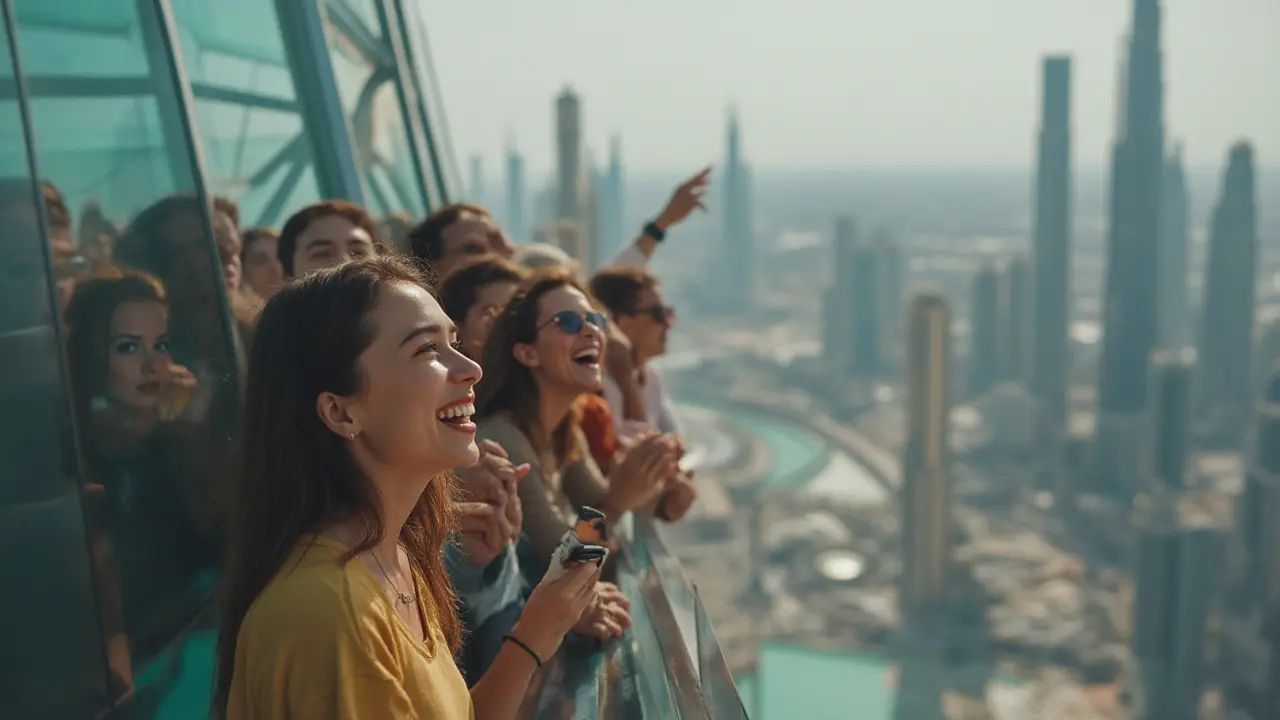
Best Times to Visit and Local Tips
Dubai’s relentless sun is no joke, so the best time to visit Dubai Frame is October through March. Mornings are quieter; afternoons fill up fast with school trips, especially during local festivals or long weekends. The UAE’s school holiday calendar (Spring Break in March-April, Winter Break in December) means certain days get crowded—plan ahead if you prefer to avoid lines.
Start your trip early if you want a stress-free stroll. The hustle begins post-11am as tour groups start pouring in. The best views for cityscape shots? Head to the north edge of the Sky Deck during golden hour or after one of those dramatic rainstorms that sweep in from Sharjah—clouds over Sheikh Zayed Road make for unreal photos. If you’re fasting during Ramadan or visiting on Eid, check for extended night hours, and look for seasonal treats like lugaimat or Arabic coffee carts in the park below.
Wear comfortable shoes; you’ll cover more ground than you expect. The air-conditioning is solid inside but bring a light jacket in winter—those panoramic windows let in a cool draft. Photography is allowed everywhere except for the security checkpoints and the exhibition entry points. Tripods aren’t usually allowed unless booked in advance for commercial shoots. Want that rare-empty shot for your Insta? Book the first or last slot of the day, or aim for weekday mornings.
- If you drive a Tesla or electric car, Zabeel Park has charging stations not far from the Frame ticket counter.
- Taxis, Careem, and Uber are easy picks. Dubai Metro’s Al Jafiliya Station is a fifteen-minute walk—manageable when it’s not mid-summer.
- The Frame has accessible ramps for strollers and wheelchairs; elevators are roomy.
- For families, strollers are allowed, but scooters and hoverboards need to stay at home.
- The Frame is right across from Al Hana Centre, known for its local stores and cafeteria snacks if you’re hunting for food after your visit.
A handy stat for the planners:
| Month | Average Visitors | Peak Hours |
|---|---|---|
| January | 220,000 | 12pm - 3pm |
| March | 230,000 | 11am - 2pm |
| July | 110,000 | 4pm - 7pm |
| December | 265,000 | 1pm - 4pm |
Local Flavors and Nearby Attractions
Once you finish at Dubai Frame, don’t just dash back to Sheikh Zayed Road. Zabeel Park itself calls out for a picnic or a stroll if the weather’s on your side—cue flocks of families, nannies, and joggers. Food trucks line up on weekends, serving everything from falafel to creative desserts, especially during the winter Ripe Market. Zabeel Park even has its own adventure zone and boating lake if your crew isn’t tired out yet.
Love Emirati snacks or international bites? The area around Karama gives you everything: Mumbai’s best chaat shops, Filipino carinderias, Syrian bakeries, and of course, that Karak Chai on every corner. The City Walk area, a 10-minute cab ride, is a go-to for cool cafés and sneaker boutiques. Not far off is the famous Dubai Glow Garden—one of the quirkier sideshows of winter season, where you’ll find glowing animals, talking trees, and animatronic dinosaurs after sunset.
Looking for culture? The Etihad Museum—a homage to the UAE’s formation—sits west of the Frame. Its exhibitions mix retro and modern, with original photos and artifacts from the country’s early days. Or take a detour to Al Seef, just a quick drive north along the creek, for winding alleys and dhow cruises along the water. Need to cool down? Hit the Dubai Garden Glow or the ice rink in Dubai Mall, both within 15-20 minutes by car.
During holidays, the area becomes a hive of activity—especially for Dubai Shopping Festival (usually late December to late January). Local brands set up pop-up stalls inside Zabeel Park, kids wave UAE flags, and fireworks often light up the skies, best viewed from the Frame itself if you time your visit right.
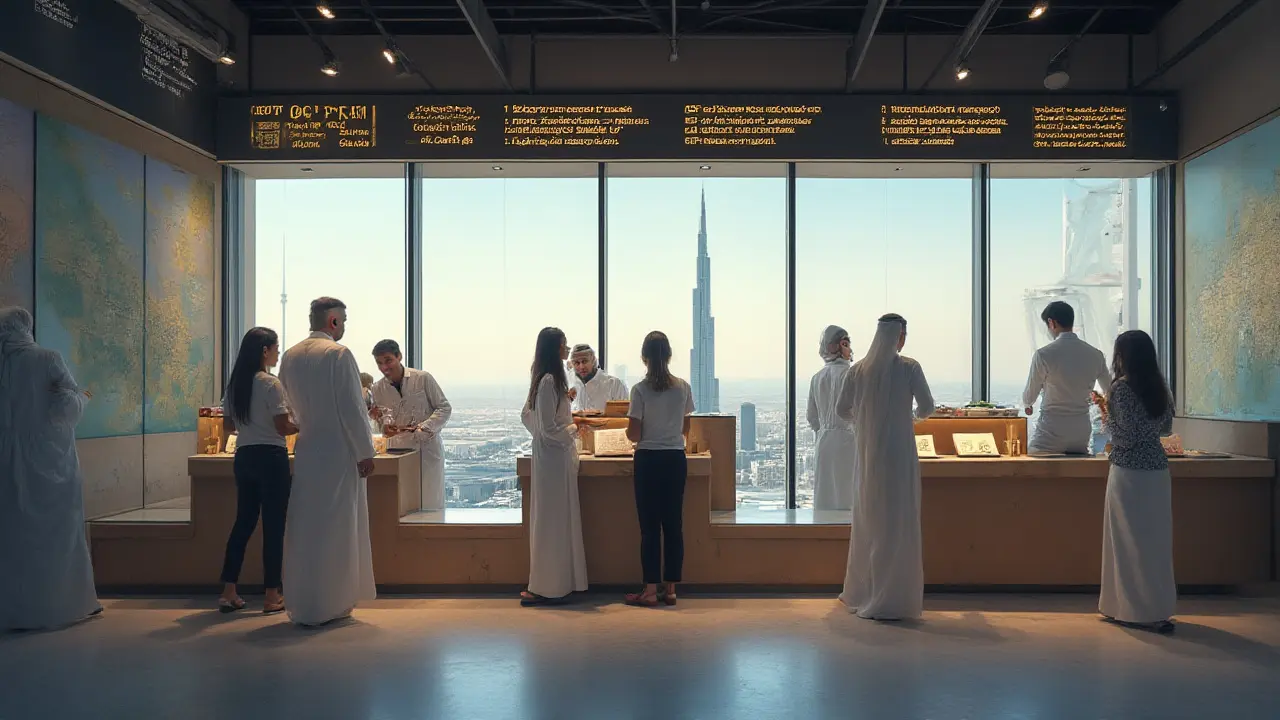
Practical Advice and Future Developments
Within Dubai, everything moves quickly, but a visit to the Dubai Frame doesn’t need to be stressful. Book your entry slot in advance through the Dubai Frame website or Careem's Experiences tab, which sometimes offers bundled discounts for multiple attractions. Keep your phone charged—there’s free WiFi throughout the Frame, but with so many photos and videos, batteries drain fast. Restrooms are available on every level, and there’s a baby changing room near the exit.
- During Emirati festivals (like National Day or Flag Day), expect longer wait times but enjoy themed shows and limited-edition souvenirs.
- For business folks or school groups, private tours can be arranged. Those include short talks on Dubai’s urban planning and offer access to the conference hall—handy for corporate visits or student field trips.
- Locals appreciate the combo of tradition and tech here—AI-powered exhibitions and cultural reminders make the Frame unique in a city packed with record-breaking towers.
- If you have elderly family members, request wheelchair assistance or book a guide in advance; Dubai Frame prioritizes inclusive access.
- For Insta-enthusiasts, Friday mornings or weekday sunsets work best for iconic, crowd-free shots. Avoid public holidays if you hate waiting in line.
The future’s looking energetic too. Plans call for expanding the exhibitions on the ground floor, adding new VR experiences, and hosting art installations showcasing Emirati artists. Don’t be surprised if the Frame soon lights up for new events—the 2026 Dubai Art Season will likely use the Sky Deck for immersive installations and upper-level light shows. For now, the Dubai Frame remains the city’s most eye-catching spot for panoramic storytelling, coffee with a view, or sparking a serious sense of wonder—whether you’re a first-timer or a Dubai lifer who never tires of that horizon.
